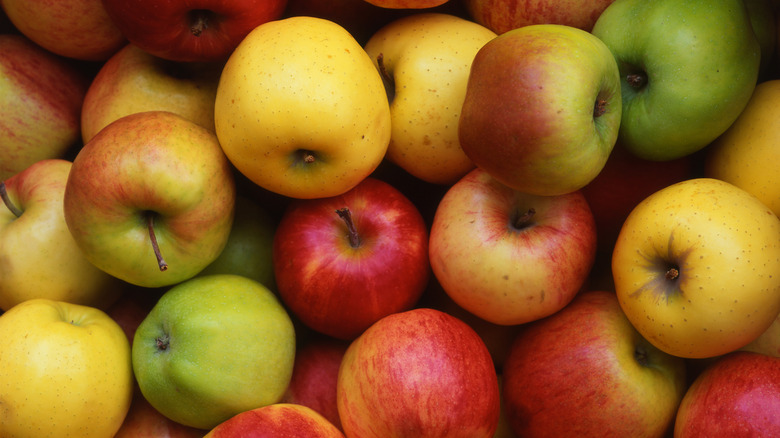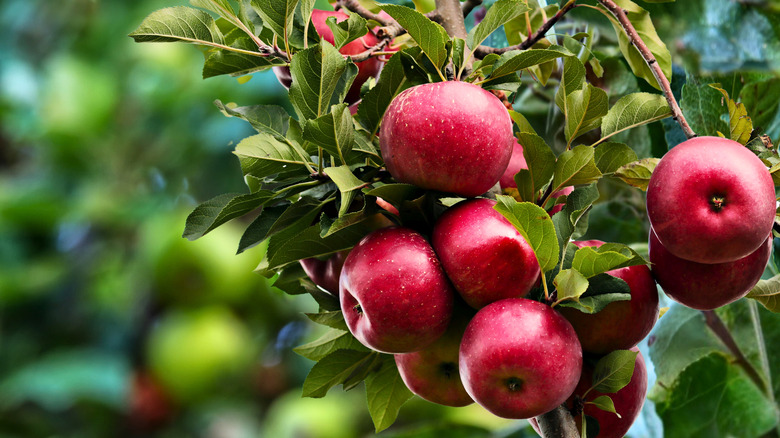There Were Once 17,000 Apple Types In North America — Where Did They All Go?
Few foods are as culturally significant in the United States as a classic apple pie. This American staple that takes us straight back to childhood demonstrates just how important apples are in our culinary traditions. And it's not just pie — harvest season comes with a variety of delicious recipes to use up that apple-picking haul. But the truth is that the country's cuisine has changed dramatically over the past 150 years. Back in the mid-1800s, North America boasted around 17,000 different varieties of apples (Some reports say 15,000). But the continent now has an estimated 4,500 types, which means that we've lost almost 74% of all the apples that people once enjoyed.
So, what happened? When the food industry became industrialized, diversity simply wasn't profitable. Before being widely commercialized, apples were unpredictable. Seeds were different from their parent tree, which meant that if you were to bite into a wild apple, you were taking a chance on whether it would be sweet or sour. Most people got their apples from the woods, their own orchards, or local sellers, and different regions enjoyed varieties that were hard to find elsewhere. Agricultural giants, however, needed consistency across their products. What's more, produce had to be shipped long distances, which meant that sturdiness and durability took priority over taste. Eventually, only the varieties that fit these criteria survived this unnatural selection to make it into grocery stores.
Why biodiversity matters for apples and all of us
Even if you can't name a single extinct apple variety, agricultural diversity is still important. For one, apples sold in stores may not be the most flavorful varieties; They're simply the ones that last longest while being shipped in a truck. This explains why grocery stores continue offering Red Delicious, when there's a fairly general consensus that it tastes like cardboard. (How do you make apple pie ever greater? Don't use Red Delicious.)
Beyond that, a lack of diversity in apples is bad for the environment, as well as business. Biodiversity is one of the strongest protections against extinction — and some apple enthusiasts worry that a pest or fungus could easily wipe out North America's apple supply. Consumer tastes also change, as we saw in the 1990s when Washington state's apple industry almost collapsed after people stopped buying Red Delicious.
No one wins with the dwindling size of our apple varieties. This has spurred action in the U.S. and abroad, where "apple detectives" have taken on the task of locating long lost varieties in the wild — or people's backyards. Consumers are also demanding more options and higher-quality varieties so they can easily choose the best type of apple for baking — while also snacking on better-tasting fruit. We may never recover most of the apple varieties that we've lost, but we can prevent more of them from going the way of the dodo.

